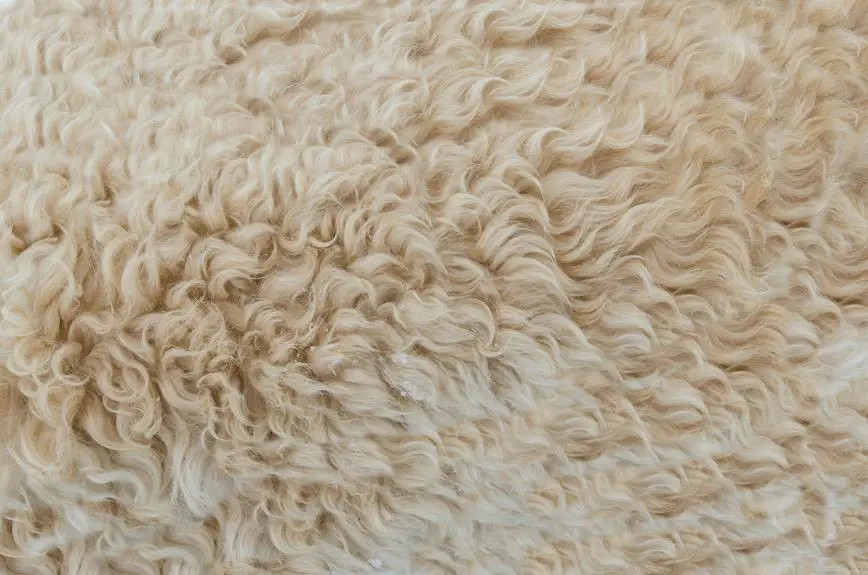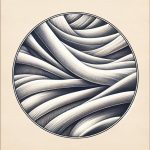When you think about fabric choices for your wardrobe, poplin might not be the first that comes to mind, yet it holds a unique place in both fashion and everyday use. Originally crafted from silk, it's now predominantly made from cotton and polyester, offering a smooth texture and impressive durability. You'll find poplin in everything from tailored shirts to casual dresses, but what exactly makes it so versatile? Understanding its characteristics and history could change how you view this fabric and its role in your clothing choices.
Table of Contents
Key Takeaways
- Poplin is a lightweight, tightly woven fabric, originally made from silk, and now commonly crafted from cotton or polyester.
- It features a smooth, crisp texture, breathability, and remarkable durability, making it suitable for various clothing styles.
- Poplin fabric has evolved from its 15th-century origins in France to become a staple in modern shirting and apparel.
- Common uses include dress shirts, dresses, children's clothing, home textiles, and uniforms, due to its versatility and easy care.
Definition of Poplin Fabric
Poplin fabric is a lightweight, tightly woven cotton material known for its smooth texture and crisp finish. You'll find that its structure combines a plain weave with a finer yarn, which creates a fabric that feels soft yet durable. This balance makes poplin an excellent choice for various garments, from shirts to dresses.
When you touch poplin, you'll notice its cool feel, which is particularly refreshing in warm weather. Its breathability makes it ideal for summer attire, allowing air to circulate while you wear it. You can also appreciate poplin's versatility; it drapes beautifully, making it suitable for both casual and formal styles.
One of the standout features of poplin is its resistance to wrinkling, which means you won't have to spend much time ironing if you choose this fabric. Additionally, poplin takes dye exceptionally well, so you'll see vibrant colors and patterns in the clothing made from it.
If you're looking for a fabric that combines comfort, style, and practicality, poplin is definitely worth considering for your next sewing project or clothing purchase.
History of Poplin
You might be surprised to learn that poplin's origins date back to the 15th century, where it was first created in the town of Avignon, France, as a luxurious fabric made from silk and wool. The name 'poplin' actually comes from 'papelino,' which refers to a type of paper made in the region. Initially, this fabric was favored by the wealthy for its smooth texture and elegant appearance.
As time went on, poplin evolved. By the late 19th century, manufacturers began blending cotton with silk or synthetic fibers, making it more accessible to the general public. This shift allowed poplin to flourish in various fashion contexts, from formal wear to everyday clothing.
In the 20th century, poplin became a staple in the world of shirting, thanks to its durability and easy care. You'll find it commonly used in dress shirts, blouses, and even children's clothing.
Today, its versatility continues to make it a popular choice for designers and consumers alike. So, when you wear poplin, you're not just enjoying a stylish fabric; you're also donning a piece of history that has stood the test of time.
Types of Poplin Fabric
Several types of poplin fabric exist, each offering unique characteristics that cater to different needs and preferences.
One popular type is cotton poplin, known for its soft texture and breathability, making it ideal for casual shirts and summer outfits. You'll find cotton poplin in various weights, so you can choose based on the level of drape and structure you need.
Another variety is polyester poplin, which is more durable and wrinkle-resistant. This type is often used for uniforms and outdoor clothing, thanks to its ability to withstand wear and tear.
If you're looking for something luxurious, silk poplin might catch your eye. This premium fabric provides a beautiful sheen and soft feel, perfect for elegant dresses or high-end shirts.
There's also blended poplin, which combines fibers like cotton and polyester for a balance of comfort and durability. This option is versatile and suits a wide range of garments.
Lastly, you might come across stretch poplin, which includes spandex for added flexibility, ideal for fitted clothing.
Each type of poplin offers distinct advantages, allowing you to select the best fit for your project or wardrobe.
Characteristics of Poplin
Each type of poplin boasts distinct characteristics that enhance its suitability for various applications, making it a popular choice among fabric enthusiasts.
You'll find that poplin is known for its smooth, crisp texture, which feels luxurious against the skin. This fabric typically has a tight weave, giving it durability and strength, ensuring it withstands wear and tear over time.
Another key feature is its breathability, allowing air to circulate, keeping you comfortable in warmer weather. Additionally, poplin drapes beautifully, making it an excellent choice for tailored garments that require a structured look.
You'll also appreciate its versatility; it can be dressed up or down, fitting seamlessly into any wardrobe.
Here are some emotional highlights of poplin:
- It brings a touch of elegance to your everyday outfits.
- You can rely on its durability for long-lasting wear.
- The softness wraps you in comfort, day after day.
- Its vibrant colors brighten your wardrobe, lifting your spirits.
With these unique characteristics, poplin remains a favorite in the world of textiles.
Common Uses of Poplin
Poplin fabric is widely used in a variety of clothing items, thanks to its elegant appearance and comfortable feel. You'll find poplin in dress shirts, making it a popular choice for both formal and casual attire. Its smooth texture and crisp finish give shirts a polished look, perfect for the office or a night out.
In addition to shirts, poplin is often used in dresses. Whether you're looking for a flattering sundress or a structured shift dress, poplin's versatility shines through. It drapes well, which enhances the garment's silhouette while remaining breathable, making it ideal for warm weather.
Poplin also finds its way into children's clothing, offering durability and ease of care. Parents appreciate that poplin is machine washable and holds up well to wear and tear from active kids.
You might also come across poplin in home textiles, such as curtains and tablecloths, where its neat finish adds a touch of sophistication.
Benefits of Using Poplin
One of the standout benefits of using poplin is its remarkable durability, which ensures your garments maintain their shape and appearance even after multiple washes. This fabric stands up to daily wear and tear, making it a reliable choice for both everyday clothing and special occasions.
You'll appreciate how poplin's smooth texture feels against your skin, providing comfort without sacrificing style.
Additionally, poplin is incredibly versatile. Whether you're dressing up for work or dressing down for a casual outing, it fits seamlessly into your wardrobe.
Here are a few reasons why you'll love using poplin:
- It resists wrinkling, so you'll always look polished.
- Its breathability keeps you cool during warmer days.
- The fabric drapes beautifully, enhancing your silhouette.
- It's available in a wide range of colors and patterns, allowing for endless styling options.
Embracing poplin in your closet means enjoying a blend of comfort, style, and practicality that fits your lifestyle perfectly. You won't regret adding this fabric to your collection!
Care and Maintenance Tips
To keep your poplin garments looking their best, follow a few simple care and maintenance tips that will help them last longer. First, check the care label before washing. Generally, poplin can be machine washed in cold water to prevent color fading. Avoid using bleach, as it can weaken the fabric fibers.
When it comes to drying, air drying is best, but if you're in a hurry, you can tumble dry on low heat. Remove your garments promptly to reduce wrinkles. Iron on a medium setting while the fabric is slightly damp for a crisp finish.
Here's a quick reference table for your convenience:
| Care Step | Recommendation | Additional Tips |
|---|---|---|
| Washing | Machine wash in cold water | Check care label first |
| Bleaching | Avoid bleach | Use gentle detergents |
| Drying | Air dry or tumble dry low | Remove promptly to prevent wrinkles |
| Ironing | Iron on medium heat | Iron while slightly damp |
| Storing | Hang or fold neatly | Keep away from direct sunlight |
Frequently Asked Questions
Is Poplin Fabric Suitable for Sensitive Skin?
If you have sensitive skin, poplin fabric might suit you well. Its smooth texture and breathable nature reduce irritation, while being lightweight helps maintain comfort throughout the day. Just ensure it's made from natural fibers for best results.
Can Poplin Fabric Be Used for Upholstery?
Yes, you can use poplin fabric for upholstery. Its durability and smooth texture make it suitable for various furniture pieces. Just ensure it's properly treated for stains and wear to maintain its appearance.
What Colors Are Available in Poplin Fabric?
You'll find poplin fabric in a wide array of colors, from vibrant hues like red and blue to soft pastels and neutrals. It's perfect for any project, allowing you to express your personal style.
How Does Poplin Compare to Other Cotton Fabrics?
When comparing poplin to other cotton fabrics, you'll notice it's smoother and denser. It's lightweight yet durable, making it ideal for shirts and dresses, while fabrics like muslin are softer but less structured.
Is Poplin Fabric Eco-Friendly or Sustainable?
Poplin fabric can be eco-friendly if sourced from organic cotton or sustainable materials. However, you should always check for certifications and production practices to ensure it aligns with your values for sustainability and environmental impact.
- How Is Guipure Lace Made? the Fascinating Process Explained - June 25, 2025
- Perfect for Prom: The Allure of a Guipure Lace Formal Dress - June 25, 2025
- Guipure Lace for the Mother of the Bride: Sophisticated & Stylish Options - June 25, 2025







